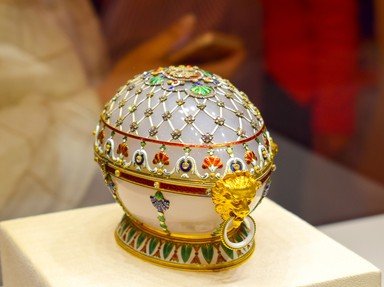
Easter Eggs Trivia Quiz
Faberge creations
These Easter eggs were made by Peter Carl Faberge's studios from 1885 to 1917. The best-known were the fifty Imperial eggs created for the Romanovs and given as Easter gifts.
by gme24.
Estimated time: 3 mins.